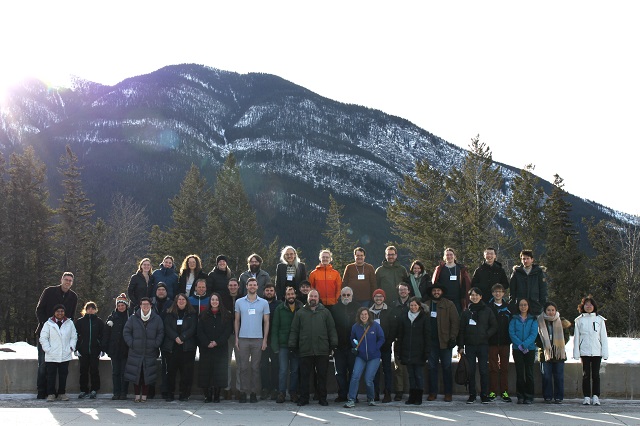Lattice Theory (25w5483)
Organizers
Nathan Williams (University of Texas at Dallas)
Emily Barnard (DePaul University)
Colin Defant (Harvard University)
Cesar Ceballos (Graz University of Technology)
Osamu Iyama (University of Tokyo)
Description
The Banff International Research Station will host the “Lattice Theory” workshop in Banff from January 19 - 24, 2025.
A central principle of combinatorics is to organize discrete data in ways which high-light useful structure. One such framework for is a partial order or poset - a rule which allows us to compare some (but possibly not all) of the objects in our data set. The typical example of is the set of natural numbers $1, 2, 3, \cdots$, which are naturally ordered from smallest to biggest. Another example, which is perhaps less common, is the collection of subsets of a given set, ordered by containment. Many examples of partially ordered structures turn out to satisfy additional properties that endow them with a richer structure called a lattice.
The theory of lattices is a well established field in mathematical sciences, going back to the late nineteenth century. Much more recently, a major shift took place when, in 2002, Fomin and Zelevinsky introduced cluster algebras. The Trim lattices of Thomas and $c$-Cambrian lattices of Reading both provided key combinatorial models of cluster algebras. Since that time, lattice-theoretic structures became central to the study of geometric, algebraic and dynamical combinatorics. This workshop aims to bring together mathematicians from diverse backgrounds to collaborate on a range of problems within the theme of lattice theory, and to strengthen the ties between lattice theory and the aforementioned adjacent mathematical fields.
The Banff International Research Station for Mathematical Innovation and Discovery (BIRS) is a collaborative Canada-US-Mexico venture that provides an environment for creative interaction as well as the exchange of ideas, knowledge, and methods within the Mathematical Sciences, with related disciplines and with industry. The research station is located at The Banff Centre in Alberta and is supported by Canada’s Natural Science and Engineering Research Council (NSERC), the U.S. National Science Foundation (NSF), and Alberta’s Advanced Education and Technology.






